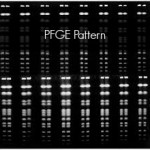The source of the E. coli O157 outbreak in Davidson County, North Carolina, is still unknown. Two children who developed hemolytic uremic syndrome (HUS) have been hospitalized, both of them students at Tyro Middle School. HUS is a severe complication of an E. coli infection that causes kidney failure and a host of other serious medical problems, including stroke, heart failure, diabetes and pancreatitis. HUS can be fatal.
 “E. coli outbreaks are most often caused by food contaminated with E. coli bacteria. Even a small bite of food containing these deadly pathogens can cause serious illness or death,” said attorney Fred Pritzker, a national E. coli lawyer who represents children with E. coli and HUS. “E. coli can also be caused by animal contact at a petting zoo or fair, and my experience is that these outbreaks involve a higher percentage of HUS cases.”
“E. coli outbreaks are most often caused by food contaminated with E. coli bacteria. Even a small bite of food containing these deadly pathogens can cause serious illness or death,” said attorney Fred Pritzker, a national E. coli lawyer who represents children with E. coli and HUS. “E. coli can also be caused by animal contact at a petting zoo or fair, and my experience is that these outbreaks involve a higher percentage of HUS cases.”
The Davidson County Department of Health is investigating the outbreak. Outbreak investigations involve both epidemiology and microbiology, according to attorney Pritzker. Stool samples from outbreak victims are tested. If E. coli bacteria are found, additional testing needs to be done to determine if it is O157:H7 and then to find the genetic “fingerprint” of the bacteria. Each E. coli outbreak has its own genetic fingerprint, according to Pritzker.
 “The genetic fingerprints of E. coli isolates are found using pulsed-field gel electrophoresis, referred to as PFGE,” said attorney Pritzker. “PFGE creates patterns that look something like bar codes. We use these patterns as evidence to prove someone is part of an outbreak and to prove a food item or animal is the source of the outbreak.”
“The genetic fingerprints of E. coli isolates are found using pulsed-field gel electrophoresis, referred to as PFGE,” said attorney Pritzker. “PFGE creates patterns that look something like bar codes. We use these patterns as evidence to prove someone is part of an outbreak and to prove a food item or animal is the source of the outbreak.”




